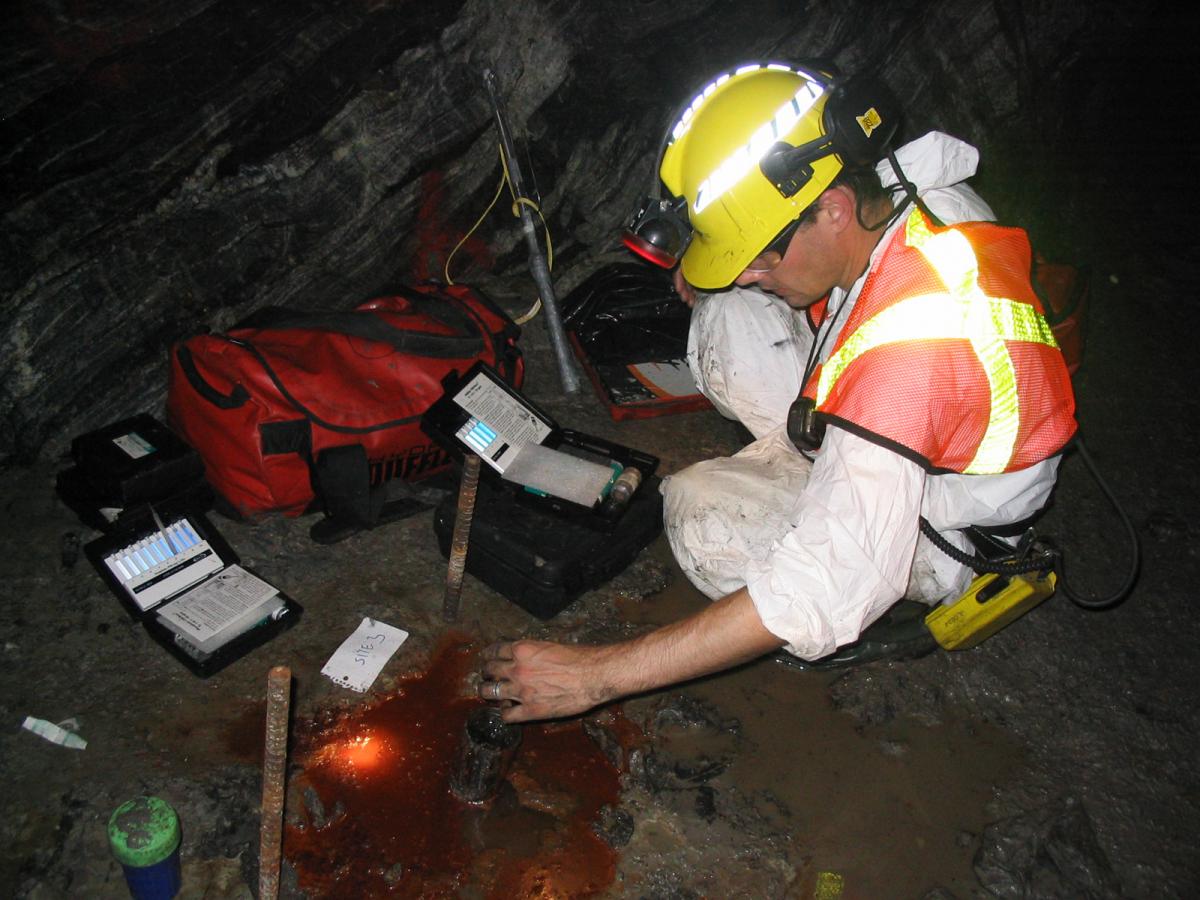Primal Planet Earth
"This discovery gives us clues as to the potential for life that is buried within the deepest parts of other planets.""Like ancient rocks, this water brings messages from the early days of the Earth. The collection and scientific analysis of the water sample deepens our understanding of the hydrosphere and the capacity for life to occur in extreme conditions [e.g. on other planets].""The water itself is its own ecosystem and symbolizes a time before anthropogenic climate change."Ingenium news release
 |
| The world's oldest sample of flowing water was collected from the Kidd Creek Mine, near Timmons, Ont. (Photo courtesy: Ingenium) |
"We thought, 'Wow'.""Everything about the water is brand new. We are seeing signals in all isotopes that we've identified so far that we've never seen anywhere else.""Since then [earlier 2013 exploration] we've gone even deeper into the mine — three kilometres down. It's even more unique.""If water has been down there for up to two billion years, it can tell us something about the atmosphere at the time, or the state of the Earth, which previously we've not been able to get much insight into.""It won't kill you if you drank it, but it would taste absolutely disgusting.""That could have great ramifications as to how life might exist at these kinds of depths, how it might survive.""It could start paving the way for understanding life on other planets as well."Oliver Warr, postdoctoral researcher, team leader, University of Toronto

Dr. Oliver Warr, three kilometres underground in a mine in
Timmins, Ont., led a team of researchers to extract two billion-year-old
water. (Stable Isotope Lab, University of Toronto)
Estimated to be over a billion years old, one of the oldest museum artifacts ever has been placed in the collection at the Ingenium Centre, Canada's Museums of Science and Innovation, located beside the Canada Science and Technology Museum in downtown Ottawa. The water is in fact, a sample of the oldest flowing water that has ever been discovered, collected from the Kidd Creek Mine nearby Timmins in 2009, from 2.4 km below the surface of the Earth.
University of Toronto geochemist Dr.Barbara Sherwood Lollar collected the sample. Her analysis determined it to be over ten times more ancient than previously known water samples. Dr.Lollar's "revolutionary contributions to geochemistry, notably in the development of innovative mechanisms for groundwater remediation, and for her discovery of ancient fluids that hold implications for life on other planets", won her the distinction of a Companion of the Order of Canada award, in 2016.
 |
| A researcher from the University of Toronto takes samples of subterranean water deep in a mine near Timmins, Ont. (Photo courtesy Oliver Warr/University of Toronto) |
According to an Ingenium news release, portions of the sample of ancient liquid are older even than a billion years, dating back to before the great oxidation event, over two billion years ago, when greater amounts of oxygen began to accumulate in the atmosphere of Planet Earth. Ingeium's acquisition includes, in addition to the water sample, a sample of a type of mineral eaten by microbes in the water. The liquid held at the museum will be accessible for research, interpretation and development of its ongoing collections.
 |
| University of Toronto team members collected samples of water 2.4 kilometres underground in Timmins. (Barbara Sherwood Lollar/University of Toronto) |
Labels: Discovery, Hydrology, Research, Two-Billion-Year-Old-Water, University of Toronto

<< Home